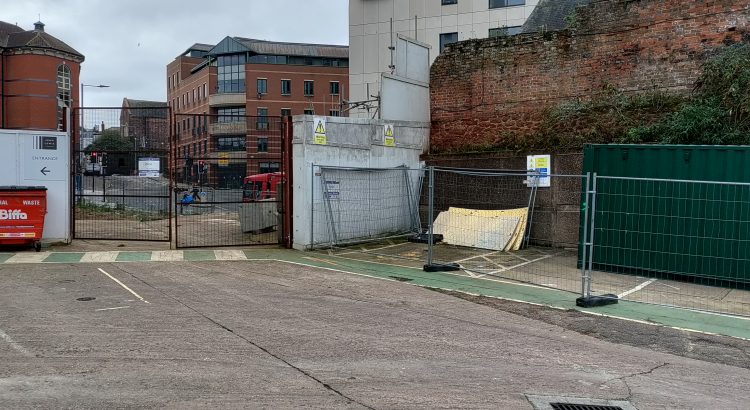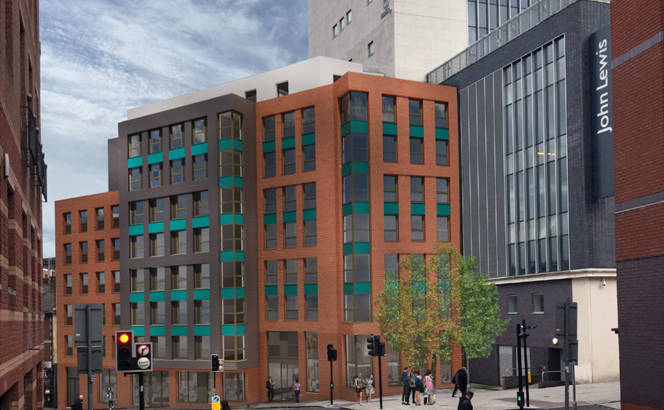The Trust has raised the awareness of ECC’s Heritage Officer, Owen Cambridge, to the recent wanton destruction of a medieval clay-bonded local Heavitree and red sandstone wall at the rear of 30 – 32 Longbrook Street that was clearly visible from King William Street. It stood on part of the combined site that was given planning permission in 2018 for purpose built student accommodation (PBSA), with this historic wall incorporated sensitively in the design. The open view from King William Street through to New North Road and Bailey Street as seen in this photograph is the result of the demolition of the medieval wall seen here in the Heritage Statement submitted with the original PBSA application.
Mr Cambridge has reacted with appropriate speed, immediately instructing the Estates Surveyor to investigate on site and asked the Planning Enforcement Officer to prepare to take action as soon as the surveyor’s evidence had been gathered and the breach formally confirmed. Subsequently, in an email thanking the Trust for our help, he advised the Trust Chair that the surveyor’s initial report showed that indeed ‘the wall has suffered severe damage’. He gave his assurance that ECC would be taking this very seriously and that ‘although the authenticity of the wall has been lost permanently’, this ‘does not mean such actions can be done with impunity.’ He has promised to keep the Trust updated.


